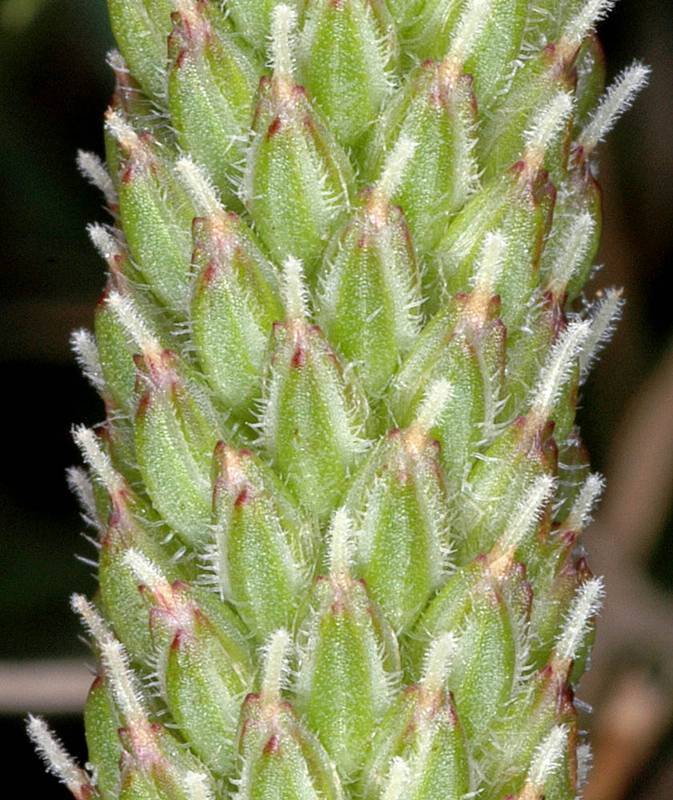Plantago macrocarpa
Plantago subnuda
Alaska plantain
Mexican plantain, tall coastal plantain
Leaves all basal, succulent, glabrous, or with a few, stiff hairs, several nerved, elliptic to elliptic-oblanceolate, 5-20 cm. long and 1.5-6 cm. wide.
Scapes stout, 0.5-4 dm. tall, hairy;
flowers in a dense, bracteate spike, 5-25 cm. long and up to 1 cm. thick;
bracts firm, keeled, 3 mm. long;
sepals 4;
corolla lobes 4, 2-4 mm. long, narrow, acute, forming a persistent, closed beak over the capsule;
stamens 4;
ovary superior, 2-celled.
Capsule 2.5-4.5 mm. long.
Plantago macrocarpa
Plantago subnuda
Occurring west of the Cascades crest along the outer coast in Washington; Alaska to Oregon.
Occurring west of the Cascades crest in coastal southwestern Washington; Washington to California.
- Local floras:
BC,
OR,
WA
- Local Web sites:
Flora NW,
PNW Herbaria
WildflowerSearch
iNaturalist (observations)
USDA Plants Database
- LBJ Wildflower Center
- SEINet
- Plants of the World Online
- Encyclopedia of Life
- Wikipedia
- Google Image Search
- Local floras:
CA,
OR,
WA
- Local Web sites:
CalFlora,
CalPhotos,
Flora NW,
PNW Herbaria
WildflowerSearch
iNaturalist (observations)
USDA Plants Database
- LBJ Wildflower Center
- SEINet
- Plants of the World Online
- Encyclopedia of Life
- Wikipedia
- Google Image Search



